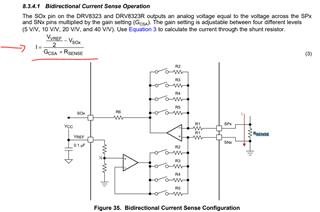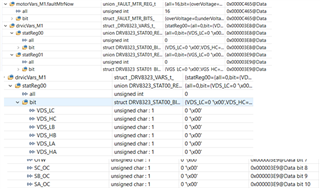Other Parts Discussed in Thread: LAUNCHXL-F280025C, DRV8323, CSD88599Q5DC
Hello,
I am using the BBOOSTXL-DRV8323RS + LAUNCHXL-F280025C om the Universal Lab Code.
Basically, It is triggering the Module Overcurrent Flag @ 2.78A (phase current).
I checked the drv settings:
|
drvicVars_M1.ctrlReg05.bit.VDS_LVL = DRV8323_VDS_LEVEL_1P700_V; |
|
drvicVars_M1.ctrlReg05.bit.OCP_MODE = DRV8323_AUTOMATIC_RETRY; |
|
drvicVars_M1.ctrlReg05.bit.DEAD_TIME = DRV8323_DEADTIME_100_NS; |
|
|
|
drvicVars_M1.ctrlReg06.bit.CSA_GAIN = DRV8323_Gain_10VpV; |
|
drvicVars_M1.ctrlReg06.bit.LS_REF = false; |
|
drvicVars_M1.ctrlReg06.bit.VREF_DIV = true; |
|
drvicVars_M1.ctrlReg06.bit.CSA_FET = false; |
It looks like just the VDS level is set for 1.7V, I tried the 1.88V (maximum), and it still triggering @ 2.78A (phase current).
My target is to run @ 5A per phase.
Can you help me?






